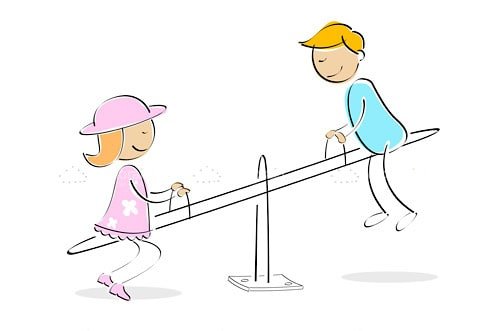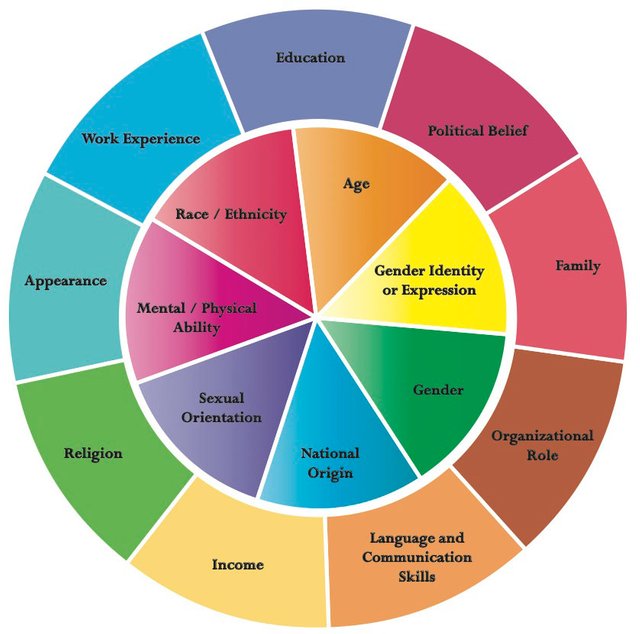How Technology Can Eliminate Bias

Thomas Wendling is an advisor to the Integrated Engineering Blockchain Consortium, a professional systems engineer at Jacobs Engineering, and a cofounder of CoEngineers.io, a blockchain engineering platform cooperative.
This week it was announced that Uber faces a federal investigation over alleged gender discrimination. The technology world has a diversity problem. But, let's talk about how technology itself can help eliminate bias.
Other than in the field of medicine, we do not often think of technology directly bringing about social good even though it has been the single most potent factor in social progress. The Nobel prize winning economist Robert Solow correctly identified technological innovation as the single biggest factor in productivity growth, and we all know how important that is to the common weal. But pursuing social benefits does not always square with uncompromising business constraints.
Bias and Value Creation
Blockchain technology combined with AI can be used for more efficient management of knowledge assets that results in networked value creation as opposed to the linear value chains of classical hierarchical organizations. Valuation of a network follows Metcalf’s Law, and is proportional to the square of the number of connected nodes in a network.
Let us consider how this technology can maintain anonymity of knowledge workers in every respect except for the one which matters: the quality of their work and the unequivocal demonstration of their skills over an immutable, time-stamped, peer-reviewed record. Anonymity in a network may drastically increase the connectivity of its nodes (its people), if it can eliminate irrelevant data in their selection.
Bias in society exists. It is a complex fact of human behavior, and it is difficult to correct because it is largely unconscious. Bias can reduce connectivity in a network, and therefore its value, unless it is effectively blinded.
Bias in STEM
There was a fascinating experiment in gender perceptions carried out by researchers Lin Bian, Sarah-Jane Leslie, and Andrei Cimpian, published in Science in January 2017, and presented on Science Friday (NPR) at about the same time. In the experiment, children in the early years of elementary school were shown pictures containing photos of two male figures and two female figures. In the pictures, there were either two men and two women, or two boys and two girls. After seeing the pictures, the children were told a story that someone in the four photos was extremely brilliant, extremely intelligent, and that they were “really, really smart”. The experiment was carefully controlled to prevent any description of the protagonist in the story that could disclose the person’s gender.
The children were then asked to identify which of the four photos was of the person being described. The youngest girls and boys were just as likely to choose a person of either gender, but an interesting thing happened as the girls got a little older. Once they were six or seven years old, the study observed a statistically significant bias towards selection of the male photos when identifying the gender of the protagonist of the story. It was a very simple experiment, and it is almost impossible not to make an inference that girls are somehow losing sight of their own brilliance at a very early age.
Children are sensitive to social ques and absorb signals from culture far more quickly than we realize. We are overwhelmed by male stereotypes effortlessly excelling at math, science, and technology.
38% of women engineers leave the field. About 20% of university engineering students are women, yet only 11% of practicing engineers are women, according to the Society of Women Engineers. In the United States, this accounts for about 300,000 individuals who have completed tens of thousands of hours of rigorous training, but are not employed in their fields.

Diversity Wheel: "The center of the wheel represents internal dimensions that are usually most permanent or visible. The outside of the wheel represents dimensions that are acquired and change over the course of a lifetime. The combinations of all of these dimensions influence our values, beliefs, behaviors, experiences and expectations and make us all unique as individuals." - Johns Hopkins University of Medicine website
Bias is Legion
We have focused mostly on the case of women in STEM, but are we truly aware of all the different kinds of bias that exist? How do I know I am not being deselected because of the shape of my nose, my alma mater, the inflection I put on long vowel sounds, the ethnicity of my last name, my lack of enthusiasm for certain team sports, or just ‘chemistry’? There are so many ways to discriminate, and our culture creates a rarified, narrow, distilled perception of what it thinks it takes to be selected. We form biases early in life, and once we reach adulthood, they have already existed for a long time, and it is hard for us to deprogram them in all their multitude even if we want to in good faith.
A blockchain platform cooperative, targeted microwork marketplace, or other such network would eliminate all the irrelevant data and provide a better way of assessing value in individuals through a search engine that finds talent as the only meaningful indicator of suitability to perform a task. Individuals are identified only by a hash, a username, and their immutable work transactions as professionals (their digital reputations). The network would not bias on irrelevant factors because it cannot. The idea of women, veterans, and minorities existing as underutilized resources is an extension of this idea. Monetizing the enormous value of untapped human talent is not only an important altruistic goal, it is a ruthless business calculation.
The highest and best use case for blockchain technology and AI may be the networking of knowledge assets away from linear value chains to networked value creation. The value it creates may concurrently help rid the world of a perennial problem that has never been met with a sustainable solution.
✅ @orangejulius, I gave you an upvote on your post! Please give me a follow and I will give you a follow in return and possible future votes!
Thank you in advance!
Congratulations @orangejulius! You received a personal award!
Click here to view your Board
Do not miss the last post from @steemitboard:
Congratulations @orangejulius! You received a personal award!
You can view your badges on your Steem Board and compare to others on the Steem Ranking
Do not miss the last post from @steemitboard:
Vote for @Steemitboard as a witness to get one more award and increased upvotes!